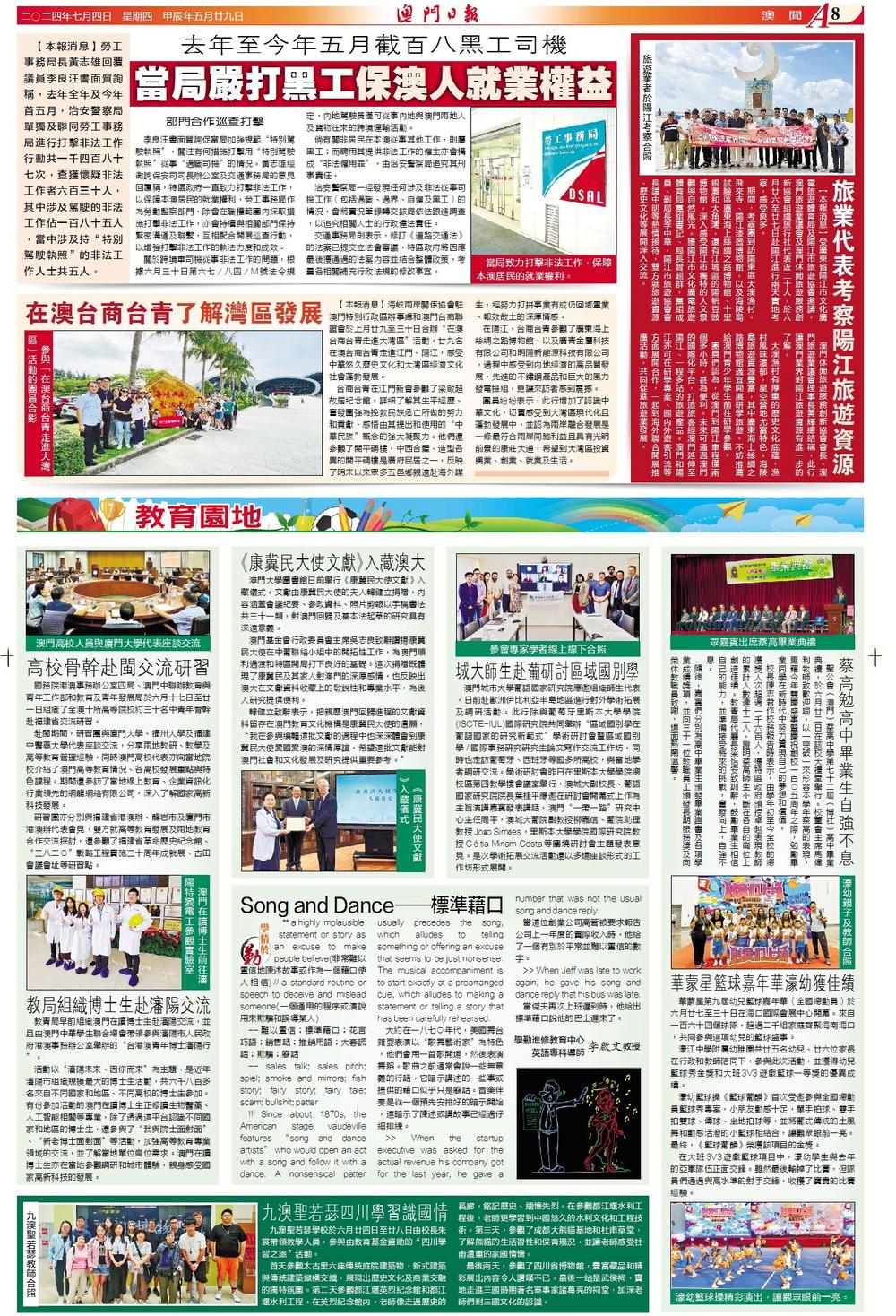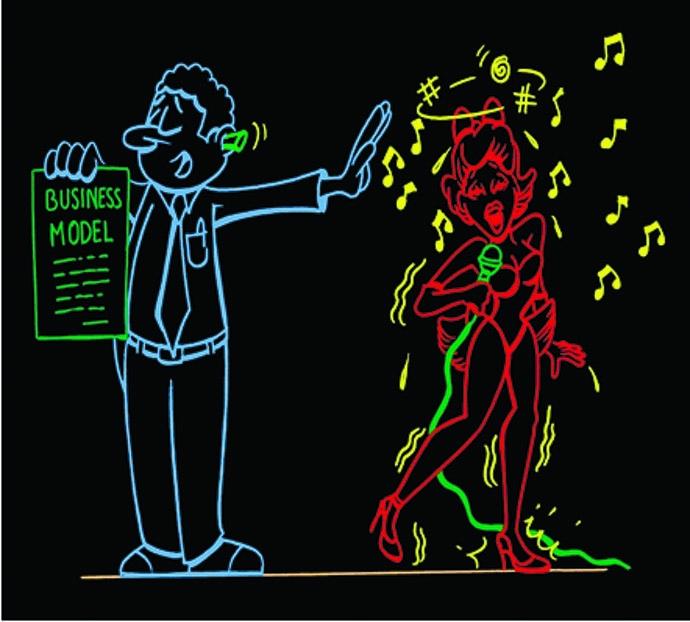Song and Dance——標準藉口
** a highly implausible statement or story as an excuse to make people believe(非常難以置信地陳述故事或作為一個藉口使人相信) // a standard routine or speech to deceive and mislead someone(一個通用的程序或演說用來欺騙和誤導某人)
~~ 難以置信;標準藉口;花言巧語;銷售話;推銷用語;大套謊話;欺騙;廢話
~~ sales talk; sales pitch; spiel; smoke and mirrors; fish story; fairy story; fairy tale; scam; bullshit; patter
!! Since about 1870s, the American stage vaudeville features “song and dance artists” who would open an act with a song and follow it with a dance. A nonsensical patter usually precedes the song, which alludes to telling something or offering an excuse that seems to be just nonsense. The musical accompaniment is to start exactly at a prearranged cue, which alludes to making a statement or telling a story that has been carefully rehearsed.
大約在一八七○年代,美國舞台雜耍表演以“歌舞藝術家”為特色,他們會用一首歌開場,然後表演舞蹈。歌曲之前通常會說一些無意義的行話,它暗示講述的一些事或提供的藉口似乎只是廢話。音樂伴奏是從一個預先安排好的暗示開始,這暗示了陳述或講故事已經過仔細排練。
>> When the startup executive was asked for the actual revenue his company got for the last year, he gave a number that was not the usual song and dance reply.
當這位創業公司高管被要求報告公司上一年度的實際收入時,他給了一個有別於平常並難以置信的數字。
>> When Jeff was late to work again, he gave his song and dance reply that his bus was late.
當傑夫再次上班遲到時,他給出標準藉口說他的巴士遲來了。
學勤進修教育中心
英語專科導師
李啟文教授





